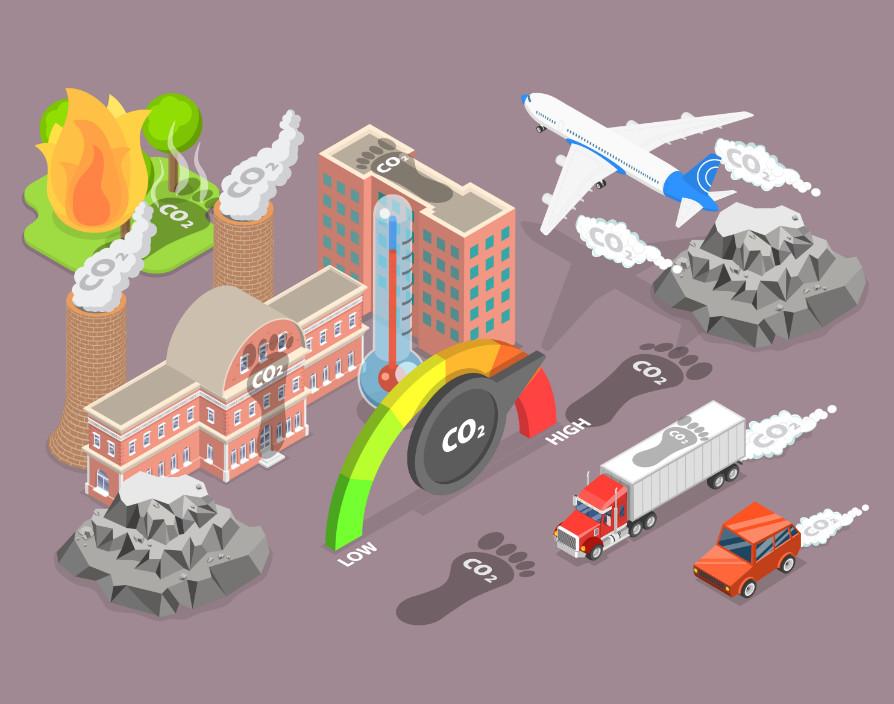SMEs have a key role to play in the UK’s journey to net zero but with fears over accusations of greenwashing and increased pressure from stakeholders it can feel like a minefield.
Confusion around the meaning of carbon neutrality versus net zero emissions, accusations of greenwashing and an increase in requests to provide evidence of ESG (Environmental, Social and Governance) credentials has left some SMEs (Small and Medium Enterprise) feeling paralysed when it comes to demonstrating the environmental sustainability of their business. And with SMEs making up 99.9 percent of UK businesses and being responsible for 43-53% of the UK business greenhouse gas (GHG) emissions, they have a key role to play in our collective race to net zero.
SMEs, unlike larger corporations, often do not have the staffing, expertise, and funds to be able to tackle the increased requirements to demonstrate ESG credentials.
This is echoed in a recent report by Lloyds Bank, which revealed that 40 percent of SMEs surveyed said that the costs involved and insufficient budgets were standing in the way of their business reaching net zero emissions.
There is no doubt that, for some SMEs, being able to reach net zero will come at a cost, and financial support will be required to help them quantify and make the required investments to reduce their emissions. As a result, Governments are expected to spend trillions in the coming decades on ensuring their nations reach net zero.
However, the drive to net zero should not be viewed by SMEs as an additional burden during already challenging times; but as a huge opportunity.
The drive to net zero is a golden opportunity
The UK’s net zero target of 2050 means large companies are already facing increased regulation around the level of their GHG emissions. Since April 2022 large corporations are required by law to include climate risks in their annual reporting. Stipulations are also already in place to ensure Government suppliers are taking steps to reduce their emissions.
It is therefore highly likely that the requirements placed on UK businesses of all sizes will become ever more stringent in the years ahead. While businesses, both large and small, are currently recovering following the challenges associated with Brexit and Covid-19; and are battling with the current energy crisis; the temptation could be to place sustainability on the back burner. However, there are significant commercial gains to be made by SMEs that successfully manage to greatlyly reduce their GHG emissions.
Emissions released through the value chains of companies (known as Scope 3 emissions) are often viewed as the weak link when it comes to reducing GHG emissions. Because of this, and due to the increased pressure for them to reduce their emissions; large corporations are increasingly requiring evidence of ESG credentials from the SMEs in their supply chains. This means those SMEs that begin the process of quantifying and cutting their GHG emissions now will reap the benefits when their competitors are left trying to catch up.
Additionally, increasing energy prices mean that reduction in energy consumption will result in emission reduction and significant financial savings too.
What steps should SMEs take to reach net zero
To reach net zero, and avoid accusations of greenwashing, it is vital that organisations follow a clear carbon management hierarchy:
- Avoid – avoid emission intensive activities
- Reduce – improve efficiency and change activities to reduce emissions
- Replace – replace emissions intensive activities with low emission activities and source services and goods with low embodied emissions
- Sequester – (where possible) implement processes to capture emissions
- Offset – Offset only what cannot be eliminated
SMEs should also ensure that they quantify their emissions at least annually and track their progress.
To do so, and to avoid potential accusations of greenwashing, it is essential that as part of their emissions reduction strategy companies set targets in line with the Paris Agreement to limit climate change to below 2°C (or ideally below 1.5°C) compared to pre-industrial levels (these are called science based targets).
Setting targets and committing to them sets the direction of travel for an organisation and enables key stakeholders, employees and clients to hold the organisation accountable through monitoring of the company’s efforts and performance. And so, commitment is key.
While this may seem like a headache it will be essential to future proof businesses and ensure their sustainability both economically and environmentally.
SMEs may need to consider contracting the services of an environmental consultancy to help them navigate the requirements for ESG credentials, ensure accurate quantification and foot printing of their GHG emissions, and develop an effective strategy to reach net zero.The role SMEs have to play in tackling the climate crisis is crucial. It may not be easy, but it’s both good for the planet and good for business!
Share via:








































